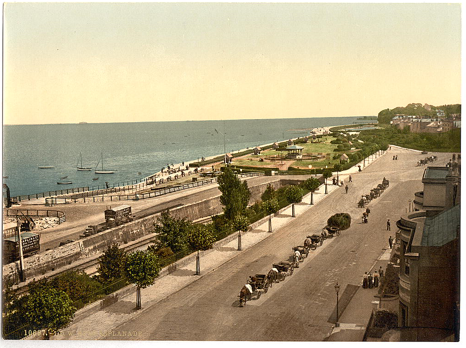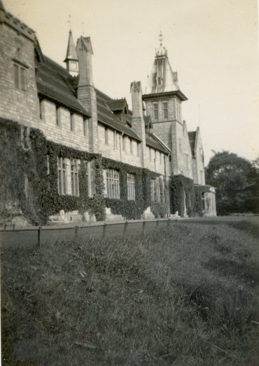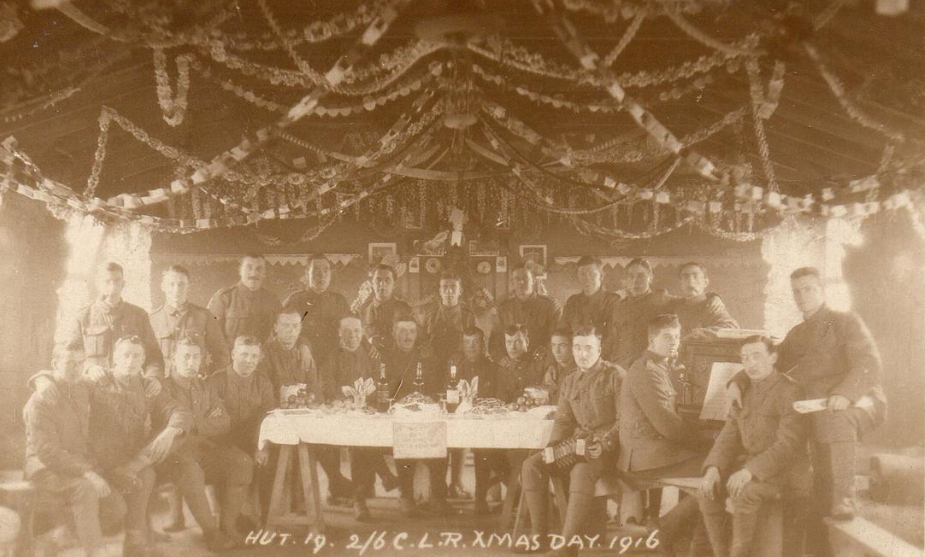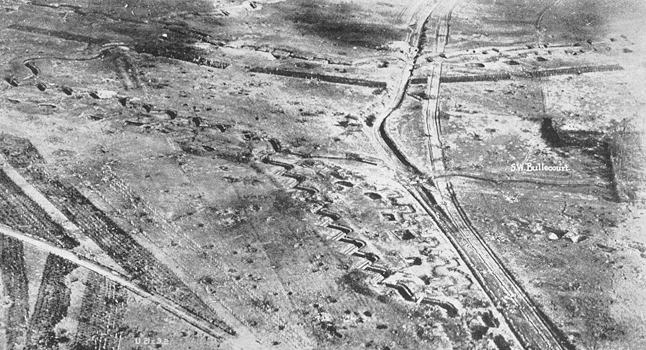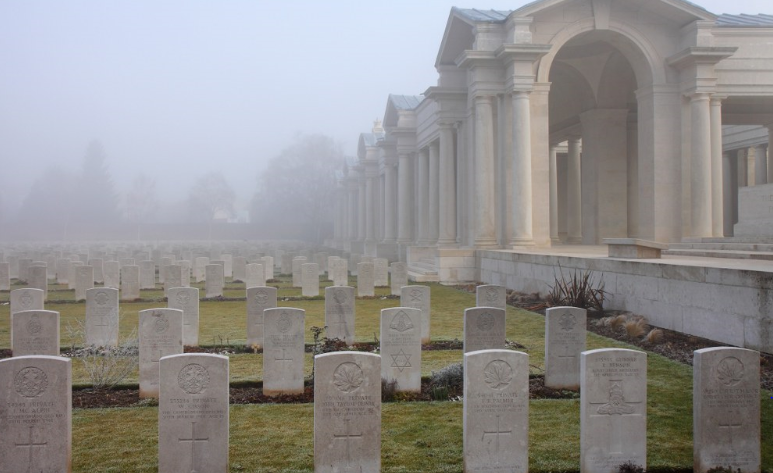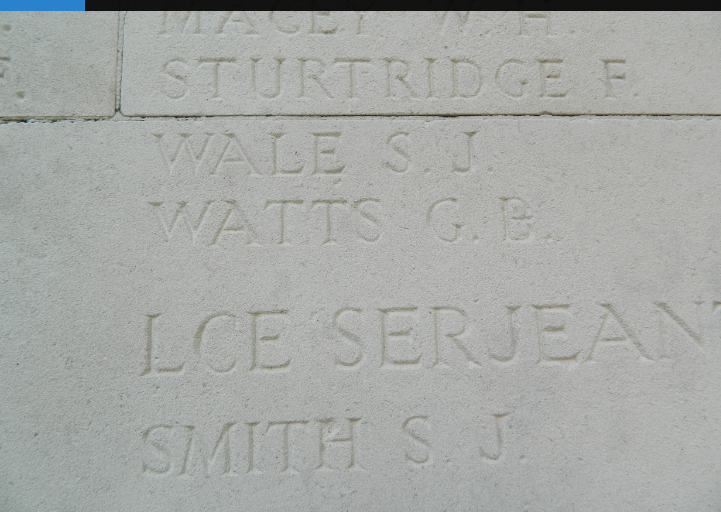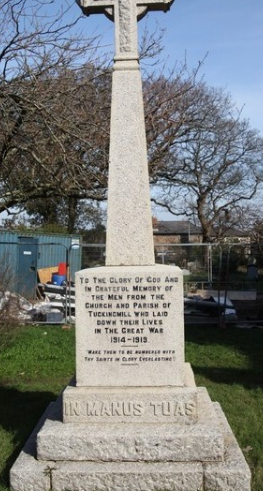Sydney John Wale
Sergeant Sydney John (Jack) Wale, of the 2nd/6th (City of London) Battalion (Rifles), The London Regiment, Regimental Number 321085, was killed in action, aged 25, on 21st May 1917 and is commemorated on the Arras Memorial.
Early Life
Sydney was born on 25th October 1890, at Ryde, Isle of Wight, to John and Ellen (nee Phillips) Wale, and was baptised on 25th January 1891.
Ryde Esplanade, photograph circa 1890-1900
Sydney was the elder of two boys, with his brother Kenneth being born in 1904. John was a marble mason, later described as a stonemason for the building trade. In 1891 the family was living at Spring Cottage in Ryde. By 1901 they had moved to Arreton, a village in the central eastern part of the Isle of Wight, about three miles south east of Newport. They were living in the quaintly named Gas Works Cottage. No record has yet been found of where Sydney was first educated; he is likely to have begun his education close to home. There was an elementary school in Arreton. A Charity School had been founded in 1772, but the report of the Select Committee for the Education of the Poor (1818) recorded the existence of an unsatisfactory Day School at Arreton, with 20 pupils of each sex. The master of the school was said to be aged and infirm and the discipline was poor. There was also a much larger Sunday School in the Parish. For Sydney to have passed the necessary examinations to be admitted to a Training College, he must have benefitted from a good education. The school in Arreton may have improved or possibly he attended the nearby school in Wootton which was opened in 1867. It was called New School and by 1891 the Headteacher was providing pupil teacher instruction both before and after school.
College records tell us that Sydney attended the Upper Grade School in Ryde for his secondary education, before becoming a pupil teacher at Newport School. He then became an assistant teacher at Sandown National School on the Isle of Wight. In preparation for admission to training college, Sydney took various courses in Botany, Light and Heat, Magnetism and Electricity, Mechanics and Elementary Chemistry. He also took drawing courses in Brushwork, Light and Shade, and Perspective. There was a requirement to take and pass an admission examination, which Sydney took in 1907, gaining distinctions in French, Geography and Science. The Archbishops’ exam for admission saw him achieve a Class 2 pass.
By 1911, Sydney had left his family home and started his professional training at Winchester Diocesan Training College. The family was still living on the Isle of Wight. Their address is given as Lynn, Wootton.
Life In Winchester
Sydney arrived in Winchester in 1910. The professional training course took two years to complete. The students had a full timetable. At the turn of the century a typical day would be as follows:
6:15am – Reveille sounded by the ringing of a handbell
6:30am “ Cup of cocoa in the Dining Hall
6:45am “ Roll Call followed by an hour’s lecture, then Morning Service
8:30am “ Breakfast
Mon/Tue/Thur/Fri
9am-12 “ Lectures with a break from 10:45-11am
1pm “ Lunch
2pm “ A two hour lecture on art/psychology/hygiene or criticism
Time allocated to Sport
5pm “ Tea
7 – 9pm Roll Call followed by supervised study in either the Junior or Senior Lecture Room
9:15pm “ Evening Chapel followed by supper
9:30pm “ Bed
10:30pm “ Lights Out
Wed/Sat
The timetable varied to allow for matches to be played. In the evening there were Smoking Concerts or Debates.
Sunday involved several Chapel Services and Scripture Study, but they were allowed free time in the afternoon.
From the Wintonian Magazine 1910-1914 we learn that Sydney enjoyed athletics. In the Sports Day of 1912 he was awarded third place in the Harriers Cross Country Race. He also took part in the Past v Present Relay Race, running the first leg against Seeviour:
Wale undoubtedly won the race for the Present.
He was placed first in the ¼ mile and the Territorial Obstacle Race, and 2nd in the 1/2 mile and 1 mile flat races.
In his first College exams at Christmas 1910, Sydney was placed 10th in the order of merit with an average mark of 61.7%. He took physics as an optional subject gaining 40/50 in the exam. By Christmas of the following year Sydney had moved up to 5th in the order of merit. At the end of his two year course at Winchester, Sydney was graded with A for Teaching and Science, and B for Music and Drawing. He passed the Board of Education Examination having taken an optional exam in Education. He was awarded a Class 2 pass for his final Archbishops’ Religious Knowledge Examination.
After leaving College, Sydney was appointed as an assistant teacher at St.Phillip’s National School, Mount Street, Bethnal Green. The school opened in 1843 as a day and Sunday School for boys, girls and infants. In the summer of 1915 Sydney married Evelyn Savage in Ipswich. In 1916 they had a son, Andrew John Wale.
A Call to Arms
Sydney enlisted in the London Regiment 2nd/6th (City of London) Battalion (Rifles).
From his War Gratuity Record it appears that he attested in September 1914. The London Regiment was unusual as all of its battalions were Territorial Force and each battalion was regarded as a corps in its own right. The 2nd/6th was formed in London in August 1914. In October they moved to Walton-on-Thames and then in November to Burgess Hill, where they were placed under orders of the 2/1st London Brigade in the 2/1st London Division. In May 1915 they moved on to Norwich and then the following month to Ipswich, where Sydney possibly met his future wife. After spells at Stowmarket and Sudbury, by July 1916 the battalion was at Sutton Veny before moving to France, landing at Le Havre in January 1917. The 58th (2/1st London) Division concentrated at Lucheux on 8th February 1917.
2nd/6th (City of London) Battalion (Rifles) at Sutton Veny, postcard courtesy of George Sumpter’s descendants
From the 9th April until 16th June the Allies were involved in the Arras Offensive. The British were to launch an attack in support of a larger French offensive. Although early encounters with the enemy were encouraging, eventually the offensive bogged down and the final attempt to outflank the German lines at Bullecourt was very costly. General Haig’s 4th Despatch outlines the Battle of Bullecourt.
To secure the footing gained by the Australians in the Hindenburg Line on the 3rd May it was advisable that Bullecourt should be captured without loss of time. During the fortnight following our attack, fighting for possession of the village went on unceasingly; while the Australian troops in the sector of the Hindenburg Line to the east beat off counter-attack after counter-attack. The defence of this 1,000 yards of double trench line, exposed to counter-attack on every side, through two weeks of almost constant fighting deserves to be remembered as a most gallant feat of arms.
Although the date for the end of the battle of Bullecourt is given as the 17th May, intermittent actions continued and on the 20th May an attempt was made to capture the sector of the Hindenburg Line lying between Bullecourt and the allied front line west of Fontaine-lez-Croisilles.
The Hindenburg Line trench system at Bullecourt
On 21st May 1917 an attack was mounted on Bovis Trench. Reports of that day describe the front as:
Quiet but for desultory shelling, most of which fell on Bullecourt.
This was far from true for the 2nd/6th Londons. They were tasked to attack Bovis Trench, which was the German main line of defence on one side of Bullecourt. This was the first major battle for the 2nd/6th Londons. Two companies, A and B, bore the brunt of the action, although D Company was involved in a flanking patrol and one platoon of C Company protected the left flank. It is uncertain if they ever reached Bovis trench. From the onset of the attack heavy casualties were incurred, with A and B Companies losing most of their officers. The battalion lost 13 officers, 226 other ranks killed wounded or missing. The battalion had been reduced by 50%, for no gain in ground and no prisoners taken. Sydney’s body was never recovered or identified and he is commemorated on the Arras Memorial, Panel 21/63.
Sydney is also included in the London County Council Memorial Book, the Tuckingmill Memorial in Cornwall, and the Carisbrooke High School Memorial in Newport, Isle of Wight.
The cemetery record has him as the son of John and Mary Wale, but his mother is recorded as Ellen in all other official records. His wife Evelyn and son were living at 28, South Terrace, Camborne, Cornwall.
Researcher and Author: Dee Sayers
Wales Signature from the Students’ Register photograph by Dee Sayers
Sources
Alwyn Ladell photography. (2018). Home page. [online] Available at: https://www.flickr.com/photos/alwyn_ladell/sets/72157665876163520/ [Accessed 2018].
Ancestry (2018). Home page. [online] Available at: www.ancestry.co.uk [Accessed 2018].
Commonwealth War Graves Commission, (2018). Home page. [online] Available at www.cwgc.org/ [Accessed 2018].
Cornwall’s War History Remembered (2018). Death Record: Wale, Sydney Jack. [online] Available at: http://www.cornwallswarhistory.co.uk/records/death-record/?srd=10354 [Accessed 2018].
The Long Long Trail, (2018). Welcome to the long long trail. [online] Available at: http://www.longlongtrail.co.uk/ [Accessed 2018].
Memorials and Monuments on the Isle of Wight (2012). Newport County Secondary School memorial: biographies. [online] Available at: www.isle-of-wight-memorials.org.uk/schools/newportcountysecondarybiog.htm [Accessed 2018].
Sumpter, G., Postcards of 2nd/6th (City of London) Battalion Rifles.
Wikimedia (2014). File:Ryde, the esplanade, Isle of Wight, England-LCCN2002708251.jpg [online] Available at: https://commons.wikimedia.org/wiki/File:Ryde,_the_esplanade,_Isle_of_Wight,_England-LCCN2002708251.jpg [Accessed 2018].
Wikimedia (2017). File:Hindenberg line bullecourt.jpg [online] Available at: https://commons.wikimedia.org/wiki/File:Hindenberg_line_bullecourt.jpg [Accessed 2018].
Vickers, J. University of Winchester Chapel Memorial Rail image.
Wikipedia (2018). Battle of Arras (1917). [online] Available at: https://en.m.wikipedia.org/wiki/Battle_of_Arras_(1917) [Accessed 2018].
Woottonbridgeiow.org.uk (2018). Wootton New Road School. [online] Available at: woottonbridgeiow.org.uk/woottonschool/chapter1.php [Accessed 2018].
| University of Winchester Archive “ Hampshire Record Office | ||
| Reference code | Record | |
| 47M91W/ | P2/4 | The Wintonian 1899-1900 |
| 47M91W/ | P2/5 | The Wintonian 1901-1902 |
| 47M91W/ | P2/6 | The Wintonian 1903-1904 |
| 47M91W/ | P2/7 | The Wintonian 1904-1906 |
| 47M91W/ | P2/8 | The Wintonian 1905-1907 |
| 47M91W/ | P2/10 | The Wintonian 1908-1910 |
| 47M91W/ | P2/11 | The Wintonian 1910-1914 |
| 47M91W/ | P2/12 | The Wintonian 1920-1925 |
| 47M91W/ | D1/2 | The Student Register |
| 47M91W/ | S5//5/10 | Photograph of 5 alumni in Mesopotamia |
| 47M91W/ | Q3/6 | A Khaki Diary |
| 47M91W/ | B1/2 | Reports of Training College 1913-1914 |
| 47M91W/ | Q1/5 | Report and Balance Sheets 1904- 1949 |
| 47M91W/ | R2/5 | History of the Volunteers Company 1910 |
| 47M91W/ | L1/2 | College Rules 1920 |
| Hampshire Record Office archive | ||
| 71M88W/6 | List of Prisoners at Kut | |
| 55M81W/PJ1 | Managers’ Minute Book 1876-1903 | |
| All material referenced as 47M91W/ is the copyright of The University of Winchester. Permission to reproduce photographs and other material for this narrative has been agreed by the University and Hampshire Record Office. | ||


